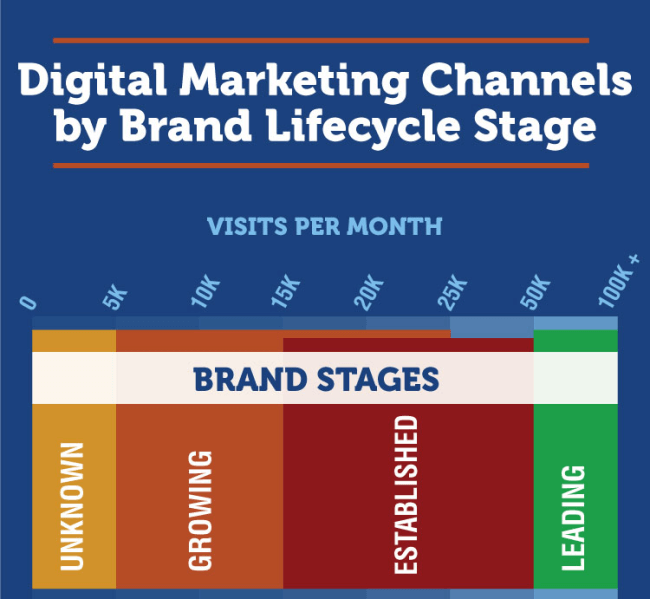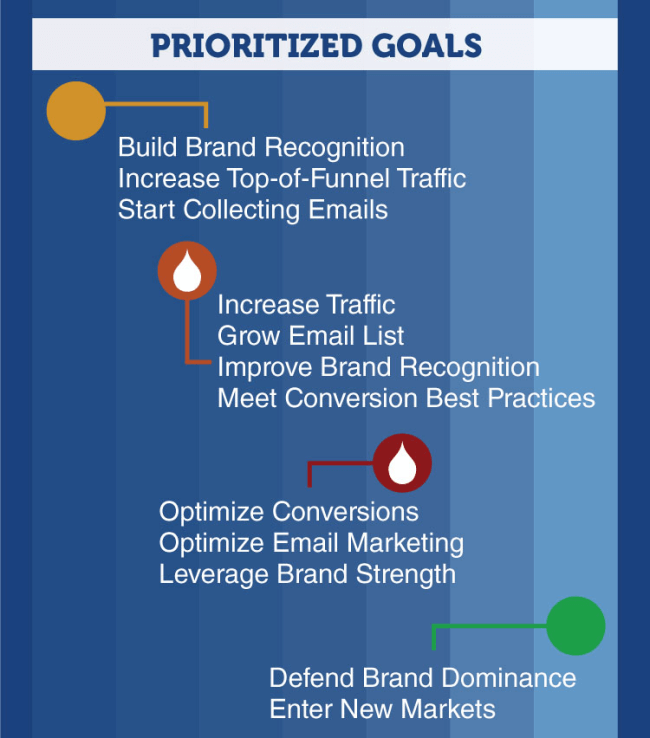Looking for a digital agency to help identify your most valuable marketing channels? Schedule a free marketing evaluation with our team to meet the right agencies fast–it’s fast, free, and we get it right.
Most brands have no problem finding opportunities. The problem tends to be sifting through the myriad opportunities across all available marketing channels to prioritize those with the best potential ROI.
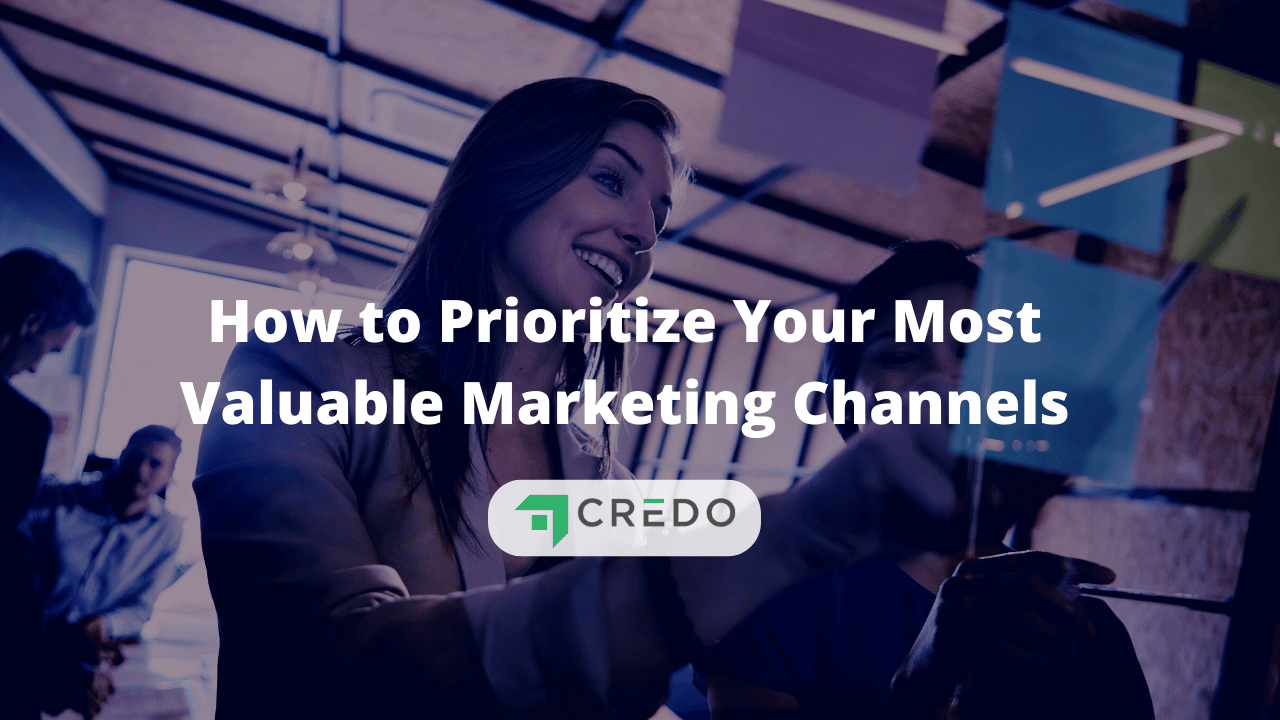
This leads us to the ad-age-old question:
Table of Contents
Where Should I Spend My Marketing Budget?
This isn’t an easy question to answer for everyone at once, yet as marketers, we get asked to do it all the time. The fact is: There is no repeatable framework for all situations. The combinations of different opportunities, needs, budget restrictions, and roadblocks faced by digital marketing leaders are endless.
This post explores the many ways a brand’s maturity influences the effectiveness of certain marketing channels and strategies.
The traffic numbers are based on a small sample of sites so take them with a grain of salt. The important thing to know is that businesses have different needs, objectives, and strategies for each stage in their brand’s lifecycle.
Knowing where a brand is in its lifecycle gives some important clues as to which goals and marketing channels that brand should be investing in. For instance, an early stage will have a different strategy than Fortune 500 business.
It’s Mostly Growing and Establishing Brands
I’ve provided much more detail in this post on certain areas specific to growing and established brands. Most of the businesses Inflow has had the good fortune to work with are either growing or established.
Also, by definition, the “start-up” phase doesn’t last long, and most don’t survive it, therefore I cover it less.
Particular attention is given to Search Engine Optimization (SEO) because that is where I have the most first-hand experience, though I have worked across each one of the digital marketing channels discussed below.
Prioritizing B2B Versus B2C Marketing Channels
A recent HubSpot survey identified the marketing channels that both B2C and B2B brands are currently prioritizing. Knowing where your competitors are focusing is at least one variable to consider when assessing your strategy.
B2B Marketing Channels
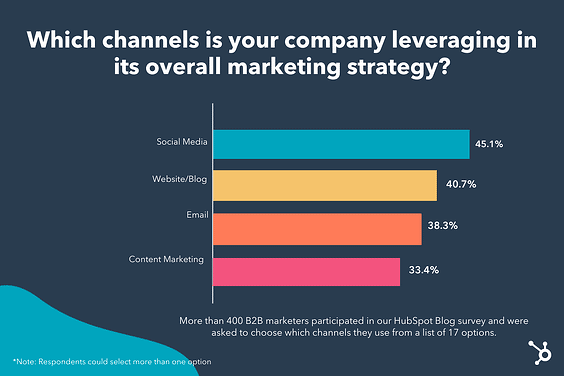
B2C Marketing Channels
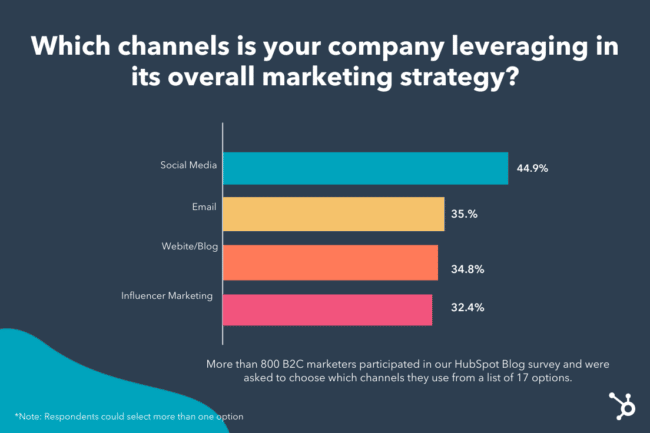
Overall, there are not any notable differences in where and how brands are marketing their products. By no means is this how you should prioritize your own marketing channels but it gives a helpful snapshot of the general consensus.
Digital Marketing Channels
The image below is a portion of this infographic, with the colors corresponding to the Brand Lifecycle Stage portion of the graphic above.
This is not an exhaustive list but covers the marketing channels most responsible for the vast majority of traffic and sales for most businesses online.
Content Marketing Channels
All marketing is content marketing. It is not a stand-alone channel. Really, no channel can “stand alone” these days, but this one, in particular, tends to weave its way deeply into the others.
Content marketing may take many forms at different times in a brand’s lifecycle. Social media is content. Conversion rates can be optimized through content. Public relations and advertising are also both forms of content.
New brands use content to introduce potential customers to what they have to offer, and to their brand. This is often done through the media using public relations techniques, like connecting your story to one that is already making headlines.
Because your brand is new, the media may be interested if you have a good story to tell – especially if your brand has created a new product category, or is disrupting an industry in a notable way.
Another common strategy for new brands is to leverage the strength of another, more established brand, by contributing free content.
It makes sense to put your best content on a non-competitive industry leader’s website if you are a new or growing brand. This is for several reasons. More specifically:
Domain Authority and Conversions
Your domain may not have the authority needed to rank for top keywords. Publishing on a more established domain allows you to build that domain authority with high-quality external links while leveraging their ability to rank better for the keywords in your content.
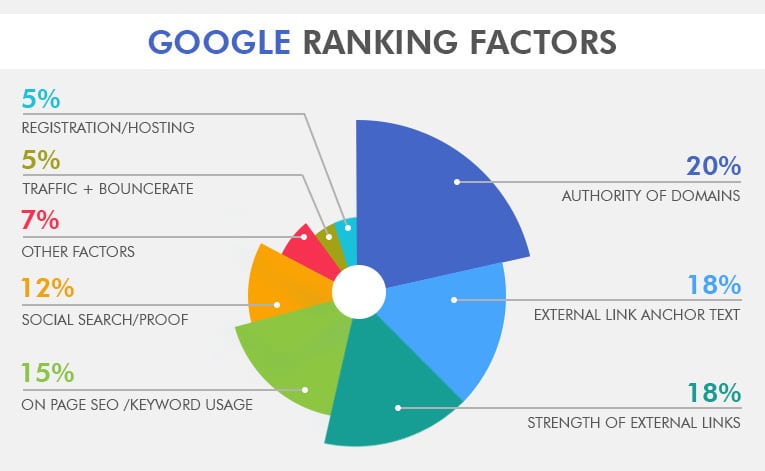
If a tree falls in a forest and nobody is around to hear it. Publishing on a more established domain allows you to inherit some of their traffic and following, reaching entirely new audiences and markets. Meanwhile, a new blog’s audience will consist mostly of the author, team members, friends, and family.
As the brand grows and begins to publish more 10x content on its own domain, promoting that content through other channels becomes increasingly important. Marketers can use content amplification tools and strategies to reach a wider audience and drive traffic directly to their website.
Remarketing and paid social are viable as a growing brand receives more traffic. Both are often great ways to drive pre-qualified traffic directly to new content in order to amplify its reach and/or drive conversions. The more traffic you have, the more you can remarket to and the more segmented you can make those campaigns.
This could go on through every channel… The point is that content marketing is inseparable from all other channels, and from any stage in a brand’s growth or customer’s buying cycle.
The phrase “Content is King” has earned its keep.
Search Engine Optimization Marketing Channels
Getting the fundamentals of SEO is a must for businesses of any size. This includes hosting the site and managing the content on platforms that have SEO best practices built in. We refer to this as “Technical SEO”–as opposed to on-page or off-page SEO.
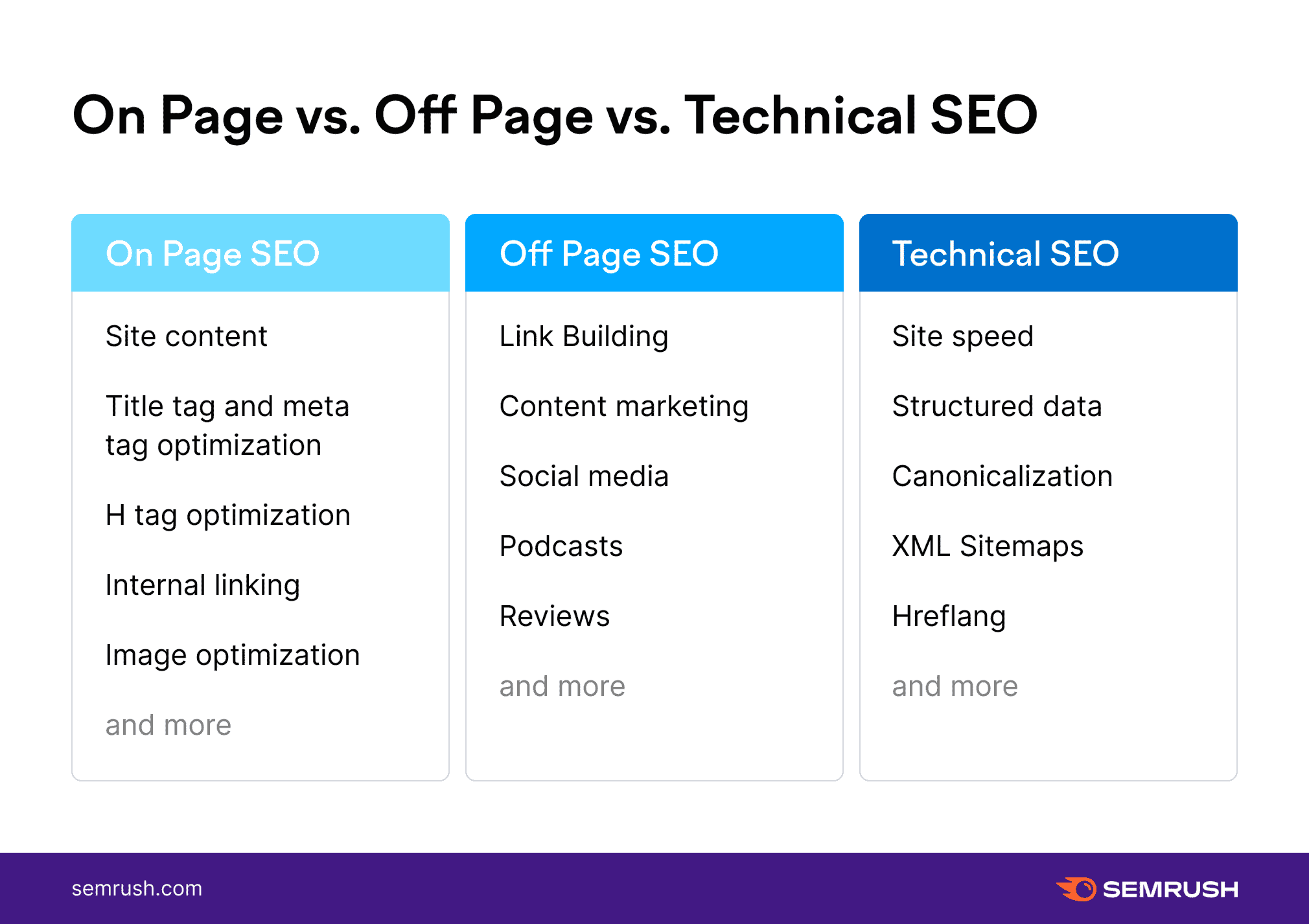
Technical SEO should be addressed before launching a new site because it affects site architecture and many core platform issues. Once launched and verified to follow best practices, technical SEO becomes more of a maintenance issue.
New businesses with a local presence need to get their “Local SEO” in order right away. Fortunately, it mostly involves making sure your Name, Address and Phone Number (NAP) is consistent everywhere, including major data suppliers and other citation sources.
Brands with brick-n-mortar locations have a need for more detailed and experienced local search optimization.
Keyword Research
Keyword Research is something that should be incorporated from the beginning, as far back as the business plan.
I have seen several entrepreneurs save themselves a lot of hard-won funding by pivoting their business model based on keyword research. But low keyword search volume doesn’t have to mean the end of an idea.
New product categories, industry-disrupting hardware, and software; when nobody is searching for what you have to offer, it’s time to create demand. Primarily accomplished through public relations and content marketing, demand generation can also be approached strategically from SEO marketing channels.
Keyword Research Example
I once had a client who produced instructional videos within a certain industry. …let’s say basket-weaving. There are dozens, if not hundreds, of well-known basket-weaving instructors and celebrities, each with their own following.
It was a new brand with something new to offer: An entire site made up of expert basket weavers offering free advice, including high-definition tutorial videos and interactive live chats, as well as forums, video commenting, and rating. The problem was the few basket-weaving enthusiasts using the site were not interacting very much.
Conversions were low and attrition was high because they didn’t have the critical mass needed to become an active community, which was at least half of their value proposition: Premium Basket Weaving Community where you get direct access to the basket-weaving gurus you’ve been reading about in magazines.
The problem was that basket weavers didn’t really know there was such a site like this.
Previously, if they wanted to see a basket-weaving video they’d go straight to YouTube, or Google “basket weaving videos” or “basket weaving instructions”. Usually, this search ends either on Youtube or something local, like the YMCA or community college’s “basket weaving 101” page.
Brand Awareness and Community Matter
If they knew such a thing existed, they would search for it and pay for it. But they didn’t know it existed so we had to take a different route.
By far, the most effective strategy here would involve a publicity campaign of some sort, but we’re talking specifically about SEO in this example.
The site was too new to rank for “basket weaving videos” or “basket weaving tutorials” which is what was in their original marketing plan.
Eventually, they got there, but at first, it made sense to tweak that strategy for their brand’s lifecycle stage at the moment, which was “newbie in a competitive landscape”.
We focused instead on the individual instructors. Heavy emphasis was given to ranking for “Jo-ann Smith Basket Weaving Tutorial” or “Bill Farley Basket Weaving Videos”.
Only the home page was really optimized for short-tail keywords – typically combined with the brand in terms of what they showed up for (e.g. “ReednThatch.com Basket Weaving Videos”).
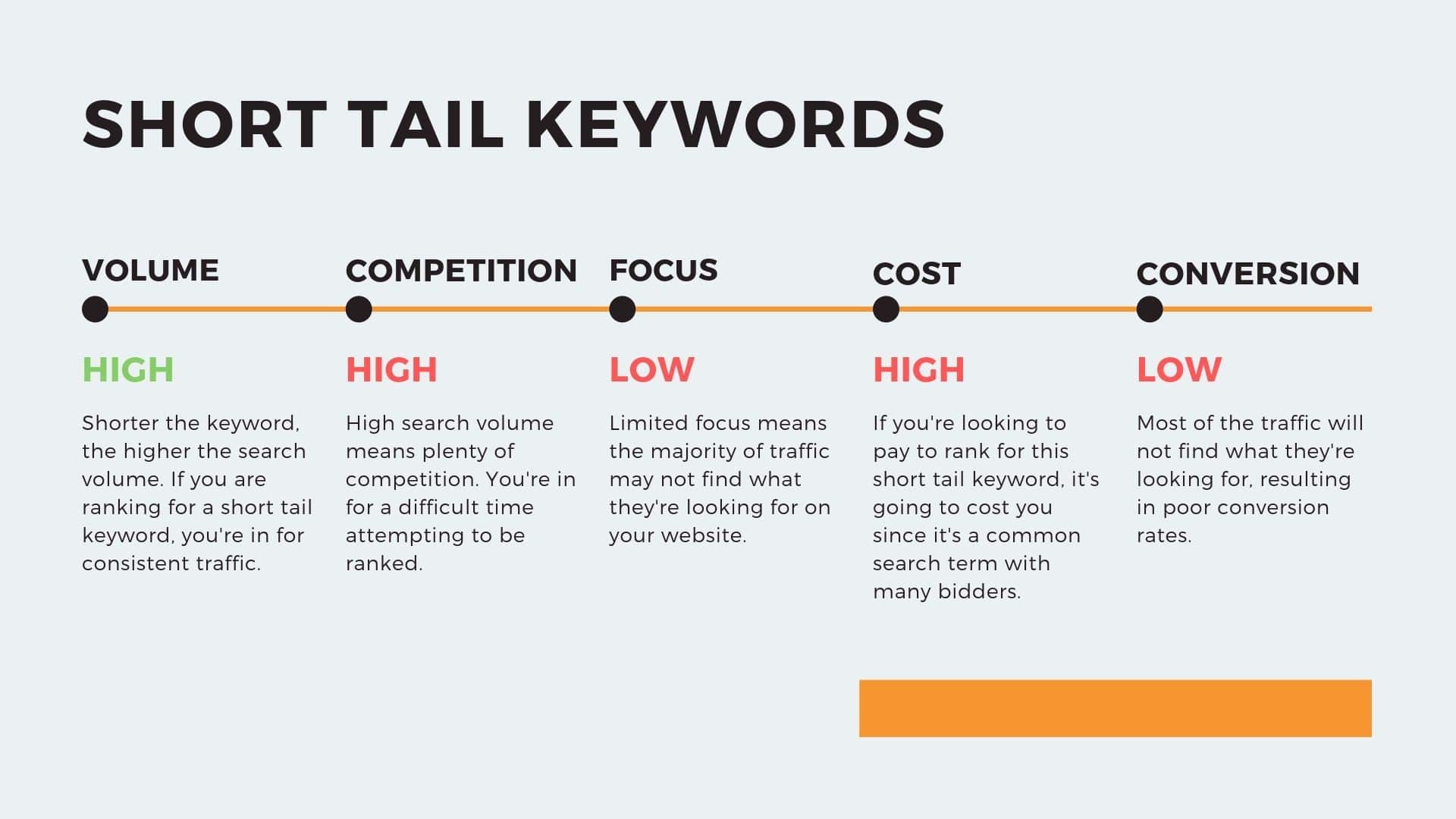
In this case, “if you build it, they will come” doesn’t quite ring true. Especially, when it comes to SEO for ecommerce brands. Even if you have an awesome product, like expert basket-weaving videos.
Domain Authority
Most new websites are not going to have the domain authority to rank for anything but branded and long-tail keywords. As the brand gains more publicity, links, traffic, and domain authority grow, which makes “On-Page SEO” much more profitable by allowing them to rank for better keywords.
OnPage optimization usually refers to things like Title Tags, Meta Descriptions, Header Tags, Image Alt Attributes, and keyword use. It also includes overall user experience and content quality issues.
With an established brand it is possible to obtain, and somewhat control, enhanced search results like Answer Boxes and the Knowledge Graph. Here’s more about that topic. It also becomes much easier to rank for short-tail keywords providing the content and user experience are good matches for the search.
By the time your business is considered a leading brand in its market, you can rank for just about anything you want. SEO is still important, but at this point, your main job is to make sure nobody else who touches the website does anything to mess with success (from an SEO perspective).
For example, you’ll be making sure your hard-earned domain authority doesn’t go down the drain during a site migration, or that rankings don’t tank after a platform change.
This also includes paying attention to Analytics and Webmaster Tools alerts, researching new opportunities like Knowledge Graph Optimization, and making incremental improvements on key landing pages.
Public Relations and Traditional Advertising
I’m including these three in the same section only to highlight their differences.
As Al Ries notes in his best-selling book, The 22 Immutable Laws of Branding:
“The birth of a brand is achieved with publicity, not advertising.”

“Once born, a brand needs advertising to stay healthy.”
According to Mr. Ries, most marketers confuse brand building with brand maintenance. “While a hefty advertising budget might be needed to maintain high-flying brands like McDonald’s and Coca-Cola, advertising generally won’t get a new brand off the ground,” writes Mr. Ries.
Ries: Publicity Is Key For New Brands
Publicity is something a brand uses early-on because they’re new and people care about new things.
As part of this, public relations and advertising channels a brand uses once they’re established and no longer getting free publicity in a positive light.
Ries compares an established brand’s advertising budget with a country’s defense budget:
“All of its tanks, planes and missiles just keep a country from being overrun by one of its enemies.”
A large brand’s massive advertising budget doesn’t buy them much, other than protection from losing their market share to competitors. Up-and-coming brands can’t afford to spend marketing dollars without a more direct ROI, and large brands use that to their advantage.
Spin-off brands (think Proctor & Gamble’s or Kellogg’s many brands) are the best of both worlds for elite businesses. They benefit from the publicity of a new product launch, but also have the enormous financial backing needed for the elite arena of traditional broadcast advertising.
Separating Public Relations and Advertising
Samuel Scott has done a fantastic job of describing the similarities and differences between public relations and advertising. Rather than reinvent the wheel by describing them in more detail here, check out Samuel’s posts on the subject:
Public relations refers to external communications and the management of relations with all of an organization’s public relationships, such as government agencies, influencers, local communities, and financial analysts. Publicity refers the specific marketing strategy within the promotion mix that increases public awareness through media.
Samuel Scott
I think there is definitely room for paid advertising for new brands, as long as the KPIs make sense.
What is the purpose of these ads?
If it’s to get someone to buy a pair of shoes from a site they’ve never heard of, you’ll be completing directly with some of the biggest paid advertising budgets in the world. If it’s to raise awareness of your brand and communicate your unique value proposition (i.e. ‘Hey, we’re not Zappos or Amazon and you can’t find these shoes in the mall.
Only cool kids wear our shoes. – then paid advertising sounds like a good channel providing you take advantage of the many hyper-targeting opportunities available to online advertisers these days.
Mobile-Friendly Design
Not everyone needs a mobile app. In the vast majority of cases, a responsively designed website that looks and works well on all common device types is all you need until you have an established brand.
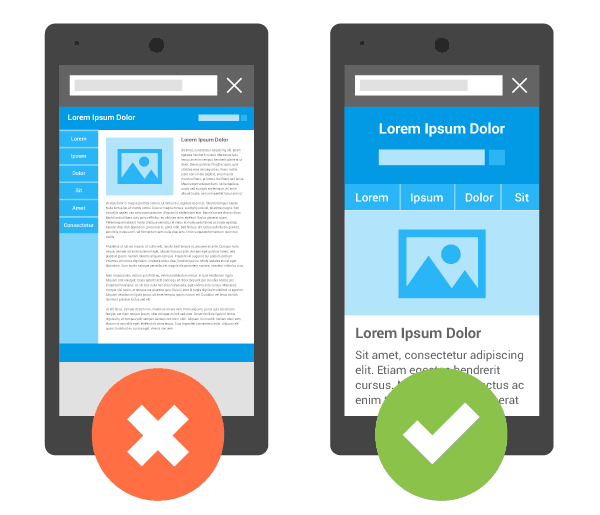
The quickest way to achieve a mobile-friendly user experience on most sites is a responsive design. This simply means having a page that looks good and provides a good user experience on all major device types and common screen sizes from a single URL.
Adapting the layout is often achieved by using flexible, proportion-based grids, fluid images, and CSS3 media queries.
The next step up from there is “dynamic serving,” in which a brand provides a different experience to different users based on their device type.
[Find top-tier, pre-vetted web development agencies here – fast and for free.]
Responsive design and dynamic serving are not mutually exclusive.
You can have a responsive website that adjusts to the dimension of the visitor’s window, while also dynamically serving a different experience.
For instance, hiding some unnecessary elements from mobile users to speed up load time, increase conversions and improve UX (user experience)–for users on mobile devices.
Alternatively, the site doesn’t have to be responsive at all if you dynamically serve a mobile-first designed website experience to mobile users and a desktop version to desktop users. In this case, it would be on a completely separate code base.
Mobile Options for developers and SEOs
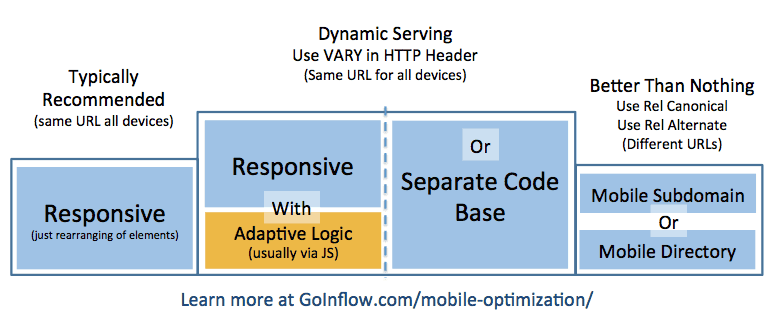 Preferably a good user experience will occur on the same URL, regardless of device. For more information about mobile best practices for SEO, click on the image above.
Preferably a good user experience will occur on the same URL, regardless of device. For more information about mobile best practices for SEO, click on the image above.
The bottom line is a brand must provide a visually appealing, functional, intuitive experience to visitors no matter what device type the visitor is on.
If you don’t have that yet, you should probably move mobile to the top of your priority list.
Growth Hacking
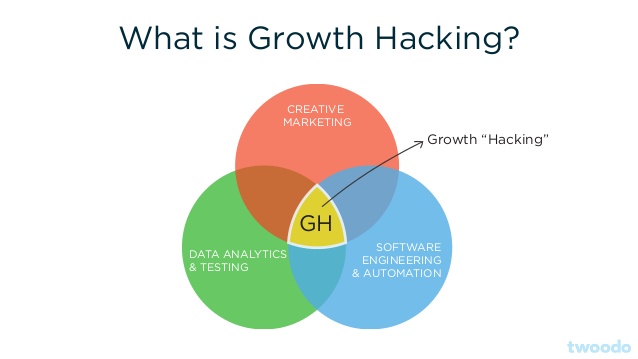 You see a lot of growth hacker venn diagrams out there that have GH in the middle of creative marketing and development.
You see a lot of growth hacker venn diagrams out there that have GH in the middle of creative marketing and development.
They leave out analytical marketing, data-driven, tech-savvy. This image from David Arnoux is the best I’ve found. The presentation (click the image) also includes 97 slides of his growth hacking knowledge.
This is one of those amorphous concepts like inbound marketing. Most of us think we know what the phrases mean in general, but few of us can agree on an exact definition. We can’t even agree on whether it should be part of our lexicon at all. As far as I can tell, it should go something like this:
“Can we just call it ‘growth’ instead of ‘growth hacking’? I hate the term ‘growth hacking’ but ‘growth’ as a product undertaking is super valuable. ‘Hacking’ sounds like tricks.”
We agreed on a strikeout compromise.
This “channel” is highly relevant to startups selling software as a service (SaaS). It involves using data analysis and creativity to reach an audience of critical mass as quickly as possible.
The reason “channel” is in quotes above is because growth hacking is more of a mindset for how to best utilize a limited marketing budget across many different channels, most of which are described in this post.
Growth hacking often uses strategies and tactics like the ones below:
- Exclusivity: Soft Launch the product to a select group of beta testers, followed by industry influencers and celebrities, followed by power users, and finally the general public.
- Scarcity: Beta testers can invite up to 5 people. No more. Ties in with Exclusivity. Facebook used this technique when it allowed users to give out a certain amount of hugs each day.
- Publicity: See the section on publicity above.
- Networking: Automatic “Invite Your Friends” steps during the signup process. Or earning points by inviting friends.
- Gamification: Earning points to win features or prizes is older than earning points on your Visa card. The marketing psychology that goes into gamification is the reason you end up playing just one. more. game. I don’t put games on my phone for that very reason.
- Marketing Automation: Leveraging technology to create efficiencies and deliver a more personalized experience to contacts, leads, and customers. Examples include the use of platforms like Marketo, Hubspot, Pardot and Klavio. Learn more about these here.
- Coding: Growth Hackers tend to be a rare hybrid of Developer and Marketer – analytical and creative. Many of them know how to code in something, whether it’s JavaScript, SQL, CSS Selectors, and Xpath (both handy for scraping) or even languages like Ruby on Rails, PHP, or Python.
Organic Social Media
This is another channel that provides value throughout the entirety of a brand’s lifecycle but in very different ways. It is also highly customizable by brand, with different businesses finding more or less value in each social platform.

The place to start with social media is developing a very clear goal. And if the brand isn’t fully established yet, that goal probably does not involve direct sales or even lead generation. Social often plays a key role in “growth hacking” strategies for startups.
Unknown and Growing brands need to establish and grow their social presence by contributing in meaningful ways on the platforms used by their audience. The goal here is to increase brand exposure.
Sometimes brands will hit the jackpot on social when it comes to actually convert those visitors. This is rare. If you look closely, most of the time there is some “publicity” behind the success of these campaigns. Other times it’s just a lucky fluke.
The good news is the more you incorporate social into your overall marketing mix, the better you’ll get, and the more likely you’ll be to get lucky with a viral campaign.
Luck, after all, is a mixture of hard work and the ability to recognize when an opportunity comes along.
Established brands can continue to use social, of course, but by now a big chunk of that audience will hopefully be email subscribers so the brand doesn’t have to rely on this channel as much with all of the various rules and regulations around marketing on each one.
Established and Leading brands may also have a better chance of actually selling something directly through organic social, but you already know you need to pay to play these days. Yet, still a cost-effective option.
Paid Search, Social & Display
Often times with new brands we find either there is no demand for their brand or primary keywords (yet), or those keywords are too expensive to bid on effectively. Furthermore, new sites do not have the benefit of large “cookie pools” from which to launch effective remarketing campaigns.
Paid social is a good way for new brands to get a following started. The key is not to try to get conversions on your site, but to use the budget to grow your following on the social platform so you can leverage it to amplify the reach of your content marketing efforts as the brand grows.
Growing and established brands can typically find a lot of ROI in paid campaigns if they are set up correctly, monitored, and continuously tweaked for optimal performance.
A good place to start would be to bid on your branded terms. These keywords should be cheap and will allow you to dominate the SERPs above the fold and protect traffic loss to other sites like reviews, competitors, and third-party domains.
There is a fantastic eight-part series from Lori Welman on Search Engine Land, which covers Brand Bidding & PPC Optimization if you’d like to learn more.
By the time a brand is established it should have a decent-sized email list, which can be used to develop custom audience lists on most social sites. This is a highly effective strategy for paid social advertising.
If tracking pixels were installed, the brand will have an opportunity to “re-market” to people who visit their site. Yes, these are the annoying ads that follow you around the web.
We do not recommend stalking people and being creepy, nor do we recommend remarketing to recent customers and showing them what they just purchased.
Here’s how not to do the first (hint: “The best retargeting strategies often target Micro-Outcomes!”) And here’s how not to do the second.

Conversion Rate Optimization
Now is the time to start following conversion optimization best practices, or listen to visitor feedback, and make common-sense changes to the site.
But when it comes to proper “testing” there really needs to be a minimum amount of traffic or conversions to make those findings trustworthy.
According to Keith Hagen, Director of Conversion Services at Inflow, having enough traffic is important, but when it comes to running tests for continuous CRO, the real question to ask is if you have enough conversions:
When testing, make sure each variation in the test can get at least 200 conversions for each goal you are testing against within a reasonable amount of time (1 or 2 weeks). If it can, you have enough traffic in the test.
Testing is made on a conversion-focused basis, not a site-traffic basis.
A site with millions of monthly visitors is great, but if the goals being tested against only have 100 conversions a week, it may not be worth testing.
On the opposite end of the spectrum, testing checkout pages means low traffic, but high conversions.
Even if you only have 500 visitors to the checkout page, as long as 200 of them are converting you could test two different variations of that page.
Keith also published How To Prioritize Your Website Testing, which is a good article to follow up with if you have enough traffic.
As the cost/benefit of doing SEO returns a lower ROI (all of the low-hanging fruit has been picked, and traffic has grown substantially) it begins to make more sense to optimize your existing traffic for better conversions.
Consider this example:
Should one spend $10,000 on PPC, social, and SEO in order to drive 20,000 new visitors at .50 cents per visit (not a bad CPC), or should one instead spend $10,000 on conversion rate optimization (CRO) in order to increase conversion rates from 1% to 2%?
To answer that question, we need to know a few more pieces of information. Let’s say the average order value (AOV) is $100. We won’t worry about lifetime value (LTV) for the sake of simplicity. The site currently receives about 100,000 unique visitors per month.
Driving 20,000 new visitors into the top of the funnel over the course of one month would result in 200 checkouts at about $100 each for $2,000 in new revenue – an $8,000 loss.
Raising conversion rates by 1% without adding one additional visitor would result in 1,000 additional checkouts from the original 100,000 unique visitors. With an AOV of $100 that gets you a nice $90,000 return on your $10,000 investment.
Does this mean Conversion Optimization is always the best choice? Absolutely not. The fewer visitors you have, the less effective it will be, making CRO (beyond basic best practices) a poor choice for most new brands.
If your conversion rate is already at, or above, industry benchmarks (~3% – 5% for most ecommerce) you may not have as much to gain – although continuous testing and improvement is still highly recommended.
Email Marketing
I made the mistake of ignoring email as a marketing channel for most of my career.
It wasn’t SEO. It seemed spammy. These days I see that email is actually the way many people prefer to receive communication with commercial intent. And the results are clear: email marketing provides clear value.
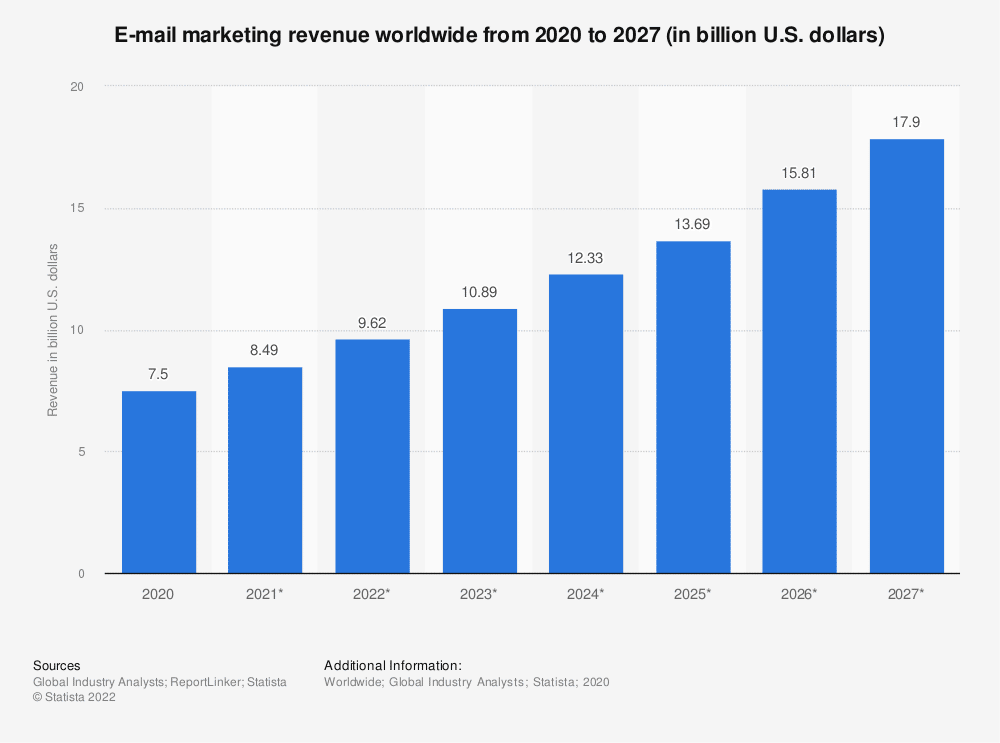
With tightened social post restrictions and the decreasing reach of organic social posts, it makes sense to bring the conversation over to email where you have more control of the conversation.
New brands can grow their email list relatively quickly with strategies like using gated content, giveaways, and strategic partnerships (e.g. buying space in a non-competitors newsletter within your industry).
However, all of these things are an uphill battle at first.
Even the growth “hackers” using clever strategies like signing up for VIP, early adopter, limited edition, and beta superstar access need to generate enough publicity to drive traffic to that signup page.
Most new brands should make sure it’s easy for visitors to sign up for their email list (newsletter, blog, premium email content) without having to make a purchase.
A new ecommerce brand will probably gain more (and higher quality) email addresses by getting new customers than by delivering gated content.
Learn From My Learning Experience
I ran a giveaway contest on Pinterest for a new clothing brand in 2015. It was based on a strategy I came up with to grow their virgin email list, and I realize now why it didn’t work.
My mistake was assuming people knew, or cared, what this brand had to offer. They had very little brand awareness and the ad itself did not work to fix that.
We didn’t even put the clothes in the promoted Pin ad, opting instead for a “Bad Santa” illustration that would appeal to their heavily tattooed audience of motorcycle enthusiasts.
The problem was that nobody knew the brand, so nobody knew what kind of gear they stood to win by entering. As a result, nobody cared and nobody shared.
There’s a lesson in there…
Had we included a lifestyle photo instead of an illustration, it may have helped. But overall, this was not the best strategy for an unknown brand.
A better strategy, and one that ultimately worked for them, was growing brand recognition through publicity campaigns, and capturing emails with “% Off First Purchase” offers shown to first-time visitors.
As brands grow, their email lists often become one of their greatest marketing assets. Nurture your email list and this channel can keep the lights on when times are tough–or help them set new records when things are going well.
Marketing automation platforms aren’t cheap. But with ever-increasing options, the affordability of these platforms improves each year. For growing and established brands, you will find a goldmine of opportunity here.
[These digital agencies specialize in marketing automation–and are ready to get to work right now.]
Simple things like a “welcome series” for new contacts and “cart abandonment recovery” emails can be implemented quickly using tools like Klavio and Marketo.
B2B organizations will find automated lead nurturing features in systems like Hubspot useful. But again, a certain amount of traffic is needed to make these opportunities viable for most businesses.
Affiliate Marketing
I was an affiliate for many years across several networks (CJ, SAS, LinkShare, and Amazon).
To be frank, I don’t like this channel for most clients.
It cannibalizes other channels, but with a lower markup since you have to pay the affiliates, who have to be policed constantly so they don’t steal your traffic, steal your content, commit fraud, or harm your brand.
Be sure the affiliate marketing channel makes sense for your brand, and that it doesn’t harm search traffic by disseminating duplicate content and cannibalizing good links.
By the way, I once caught an Affiliate Manager for an established brand contacting people who had linked to the brand either organically, or through my SEO team’s elbow grease. In essence, she was talking those people into turning their Pagerank-passing, SEO-assisting links into margin-killing, SEO-useless affiliate links.
You can probably guess how her bonus was structured.
Business Development & Networking
Business development is important at all times. “It’s who you know…” is not an entirely inaccurate cliche.
However, you’ll get different mileage out of the activity depending on where your brand is in its lifecycle and your industry.
Networking is one of the most important things a new consultant or agency can do. But for a new “brand” it can be difficult to negotiate strategic partnerships since you do not yet have much to offer the other partner.
Word Of Mouth & Referral
This is also important during all points of a brand’s lifecycle but may be most effective for growing brands.
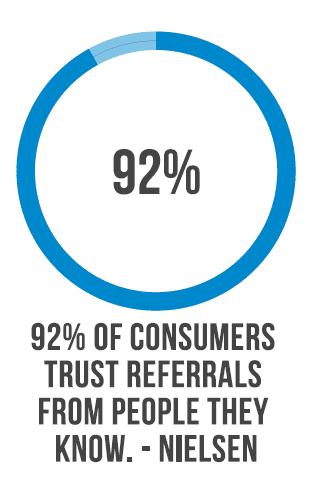
Overall, the best thing you can do to get good referrals and free, positive WOM marketing are to have excellent customer service.
Prioritization Factors
The above list of marketing channels is neither complete nor prioritized in a way that would be applicable to every situation. Likewise, the above image is a static snapshot of one approach that would likely apply to most situations.
There are many ways to prioritize marketing channels for your business. One way to come up with a personalized plan is to work your way through each of the factors below. Some are probably going to be far more important to you than others, depending on your situation.
Complexity / Difficulty of implementation
Some things are easy to implement and have a high potential impact. This is where you want to focus first.
But what about after that? What is complicated for one team, may be easy for another, and vice versa. Prioritize by ROI potential, then further prioritize by the ease of implementation for your team.
Budget / Cost
Do you need to see ROI on more affordable projects before taking this one on? Are you currently suffering from a search engine penalty? How many months do you have before you need a return on your marketing investment?
Available Resources
In-house developers and writers, Agencies, Consultants, Tools
Timeline
Is this an emergency? Are people in danger of being “let go” if you don’t turn this around within the next few months?

How soon do you need to see the ROI? Some marketing channels are longer-term investments than others.
Ability to report on success metrics
Until you can report on success metrics, performing Analytics Audit and implementing those recommendations should be a top priority.
Is it an ongoing or one-time expense?
Can it be at least semi-automated in time? It may take time to learn a marketing automation system and set up the necessary workflows, segmentation rules, etc.
But the idea is that it saves you time by automating these tasks in the long run.
Where Should You Start On Your Website?
Answering the questions for each section will give you an idea of what marketing channels to focus on:
SEO Audit
There is no substitute for a full SEO audit, including technical and on-page factors.
When should you do an SEO Audit?
Unless you have had one of these within the last year or two, it is often the first place to start for growing and established brands.
User Experience Audit
In short, consider how the following UX questions apply to your website:
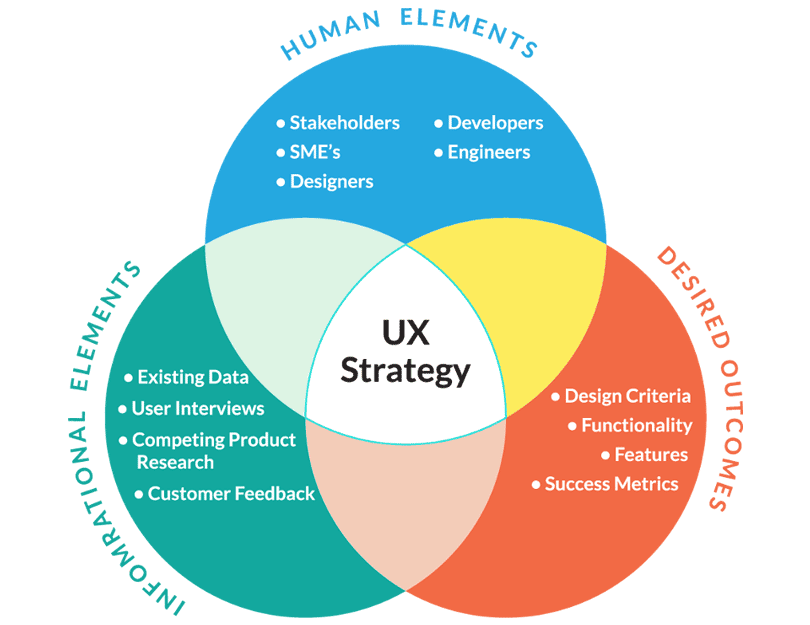
- How does the site look and operate across browsers, screen sizes, and device types?
- Is it easy to “convert” on all devices?
- How is the overall UX with regard to the content found on the site?
- Is it mostly SEO-focused–or written for human visitors?
- Are there walls of text, or are there plenty of images, videos, and rich formatting?
- Does the content provide what it promises to provide in the page title, meta description, and keywords?
- Is it obvious to the user what they should do next to accomplish their goal on the site?
When should you do a User Experience Audit?
If you’ve never had one, now is a good time. In general, if you notice low pages-per-visit, low time-on-site, high bounces, low conversion rates, and a drop in rankings… these are all red flags indicating a poor user experience.
A UX audit can be done on its own but is often combined with SEO and content audits.
Content Audit
Content audits have consistently proven themselves to provide quick, substantial ROI for websites with tens of thousands or more pages.
I have written extensively on the topic–as have many others. Rather than re-hashing what has already been explained better elsewhere, allow me to link to a few resources.
- How to Do a Content Audit, Step-by-Step – Moz.com
- Content Audit Uses Case Studies – LinkedIn
- Using URL Profiler for Content Audits – URL Profiler
- 7 Ways Content Audits Can Increase Revenue – Inflow
- More Content Audit Articles and Resources – LinkedIn
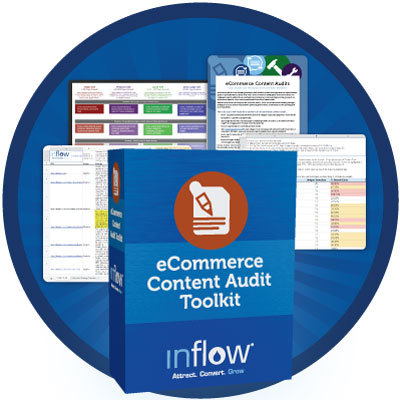 Click here to download your copy.
Click here to download your copy.
When should you do a Content Audit?
In general, the longer your site has been around, the more pages you have in Google’s index. As a result, the more likely it is that you’ll benefit greatly from a content audit.
For ecommerce sites in general, any time you have more than twice as many indexed URLs than you have SKUs (not counting blog pages) it should be a red flag.
An easy guideline for most sites of types is the ratio of pages receiving traffic and/or contributing to conversions versus those that don’t.
If you have a high percentage of pages (25% +) on a large site (thousands + pages indexed) that have zero links and zero traffic from external sources, a content audit is almost always going to be hugely beneficial.
Analytics Audit
While not listed as a marketing “channel” it is obvious that having a properly set-up analytics package is paramount to the success of the other channels.
When should you do an Analytics Audit?
Whenever there is any doubt about whether you are correctly tracking everything that needs to be tracked, you can trust the numbers. Without confidence in your analytics package, you can’t have confidence in your strategy.
CRO Audit
When should you do a CRO Audit?
If you have several thousand or more visitors per month and a visitor-to-conversion (purchase or lead) rate of less than 1% you stand to gain a very solid ROI from conversion rate optimization.
PPC Audit
Whether you’re doing paid search, remarketing, or paid social in-house–or have been using an agency–it never hurts to have a second set of eyes. Paid campaigns have a way of being put on autopilot after a while.
When should you do a PPC Audit?
It is possible to use success metrics for this, like return on ad spend (RoAS), but just because you’re doing good, doesn’t mean you can’t be doing better.
For this reason, similar to the SEO audit, if you haven’t had an audit of your paid strategy in the last two years, consider it time.
Wrapping Up
By now you will hopefully have lots of thoughts about how you might prioritize marketing channels going forward.
There are many ways to prioritize opportunities: By cost, your ability, timeline, and ROI calculations based on whatever data you have.
In short, it isn’t always easy to make an informed decision. Your brand’s lifecycle stage is one framework to consider when choosing where to invest your marketing budget.
We discussed making this a multi-part series, or even an eBook. It’s a long post, probably rambling and mired in details at certain points but I hope you’ve unearthed new strategies to implement for your brand.
Identify your difference-making marketing channels at warp speed with these specialized digital agencies!

